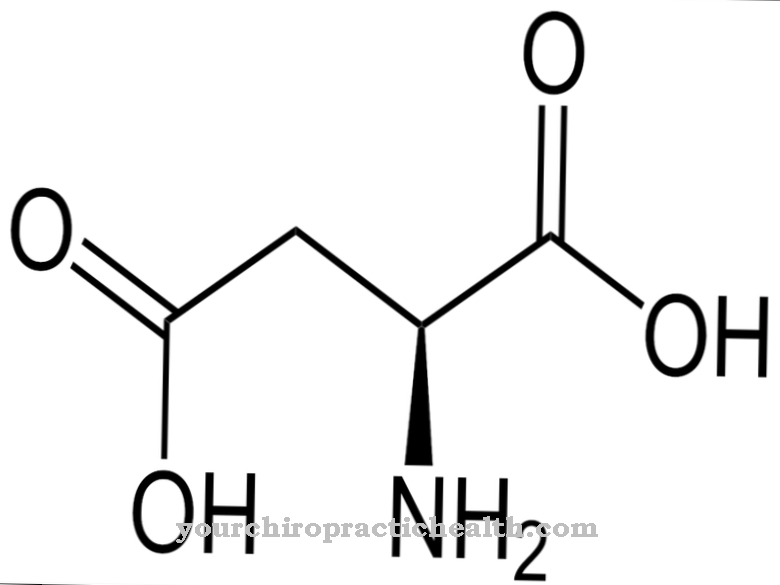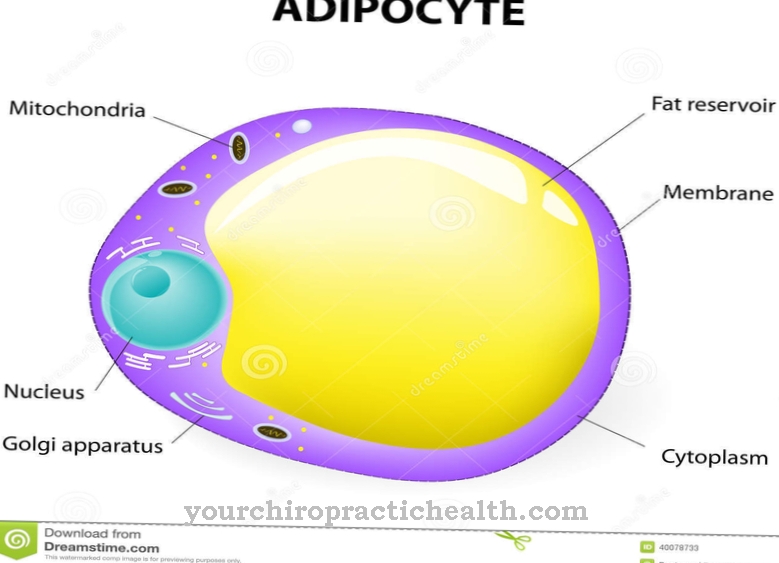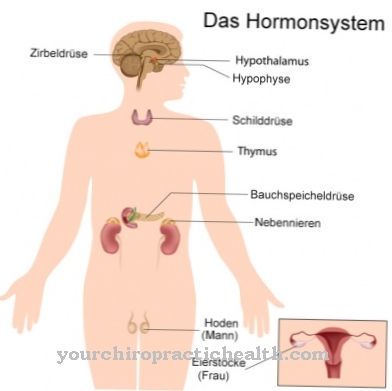Digestive enzymes are enzymes that are responsible for breaking down food. They process long-chain molecules into short-chain molecules so that they can be used for the metabolism. Most digestive enzymes are made in the pancreas.
What is a digestive enzyme?
Enzymes act as biocatalysts in the human body. This means that they can initiate and accelerate chemical reactions. The enzymes of the digestive tract are responsible for breaking down the food components. The digestive enzymes can be divided into peptidases, glycosidases, lipases and nucleases.
Function, effect & tasks
Peptidases can break down proteins. The peptidases in the human body are pepsin, trypsin, chymotrypsin B, pancreatic elastase and erepsin. With the exception of pepsin, all peptidases are produced by the pancreas.
Glycosidases are used to break down polysaccharides, i.e. carbohydrates. The glycosidases include salivary amylase, pancreatic amylase, sucrase isomaltase and maltase glucoamylase. With the help of salivary amylase (α-amylase), carbohydrate digestion can begin in the mouth. The pancreatic amylase, also an α-amylase, then continues the breakdown in the small intestine. Lipases are digestive enzymes that come from the pancreas and break down fats in the small intestine. The most important lipases are bile salt activated lipase and pancreatic lipase. Pancreatic lipase breaks down triglycerides into monoglycerides.
Nucleases, on the other hand, are enzymes that split nucleic acids. A special enzyme that splits milk sugar (lactose) into galactose and glucose is lactase.
Education, Occurrence & Properties
Most of the digestive enzymes are made in the pancreas. More precisely, they are produced in the exocrine part of the pancreas. From there they reach the small intestine via the small ducts of the pancreas and finally via the large pancreatic duct.
Salivary amylase is produced by the salivary glands. They enter the oral cavity together with the saliva. Pepsin is the only digestive enzyme produced in the stomach. It is made in the main cells of the gastric fundus. Pepsin shows its highest activity at a low pH value. This is guaranteed by the acidic stomach acid.
Diseases & Disorders
A lack of digestive enzymes usually leads to indigestion. A deficiency in lactase leads to lactose intolerance. This is also known under the term lactose intolerance.
The processing disorders in the small intestine lead to flatulence, abdominal cramps, nausea, diarrhea and vomiting. Non-specific symptoms such as tiredness, depression, inner restlessness, dizziness, nervousness or sleep disorders can also be signs of lactose intolerance. The more lactose people eat, the more severe the symptoms become. If the lactose intolerance is not treated or if milk and dairy products are not avoided, permanent irritation of the intestinal mucosa can lead to an absorption disorder. This can lead to a reduced absorption of vitamins, minerals and trace elements.
Pancreatic insufficiency is a condition associated with insufficient production of digestive enzymes. In children, the most common cause of pancreatic insufficiency is cystic fibrosis. Adults usually develop insufficiency of the pancreas after an acute inflammation (pancreatitis). When the pancreas is damaged, digestive enzymes are lacking. This leads to a considerable disturbance of digestion (maldigestion). As a result, the intestinal villi are atrophied.
Local inflammation occurs and harmful bacteria often settle in the area of the small intestine. All of this leads to massive digestive disorders with diarrhea or foul smelling fatty stools. Those affected lose more and more weight. Even with increased food intake, they cannot gain weight. If too little vitamin K can be absorbed in the intestine, there may also be an increased tendency to bleed.
The secretin-pancreozymin test can be used to directly assess the production of digestive enzymes in the pancreas. To do this, a probe is placed into the duodenum. The secretion of the pancreas is sucked off with this probe for a quarter of an hour and examined for the content of sodium hydrogen carbonate. The activity of the two enzymes pancreatic amylase and pancreatic lipase are also measured. In the first test stage, the patient is then injected with the hormone secretin. This should actually increase the secretion.
The bicarbonate content and the activities of the enzymes are then determined again. In the second test phase, pancreozymin is administered. The contents of the pancreatic secretions are then measured again. The results can be used to accurately diagnose pancreatic insufficiency with a deficiency in digestive enzymes.
A detailed medical history is the first step in any suspicion of a condition affecting digestive enzymes. The doctor is interested in whether the stool is greasy and shiny, whether diarrhea occurs, whether inflammation of the pancreas is known, whether fatty foods are tolerated and whether medication is taken. A physical examination is usually performed after taking the medical history. The doctor will gently palpate the abdomen. In this way, he can feel accumulations of air or hardening. The examiner can best capture abdominal noises with a stethoscope. The doctor also inspects the skin. In diseases of the pancreas, with involvement of the liver, yellowing of the eyes and skin may occur.
However, further examinations are usually possible to clarify the underlying disease. In addition to imaging procedures such as computed tomography (CT) and magnetic resonance imaging (MRI), blood and stool are also examined. If there is a suspicion of insufficiency of the pancreas, however, the stool examination is particularly important. The activity of the two pancreatic enzymes elastase and chymotrypsin can only be detected in the stool. With pancreatic insufficiency, both digestive enzymes in the stool are low.
A deficiency of digestive enzymes can also develop in the stomach. The pepsin is particularly affected here. Under the influence of hydrochloric acid, the enzyme pepsin breaks down protein in the stomach. Heartburn is not only caused by too much stomach acid, but also by a lack of stomach acid. If there is too little stomach acid, the digestive enzyme pepsin cannot be activated. As a result, proteins in the stomach cannot be prepared for further digestion in the small intestine and fermentation processes occur. Typical symptoms are bloating, upper abdominal gas, feelings of weakness, hemorrhoids, acne, iron deficiency, protein and zinc deficiency, fungal infections and chronic gastrointestinal infections.





.jpg)






.jpg)



.jpg)










.jpg)
